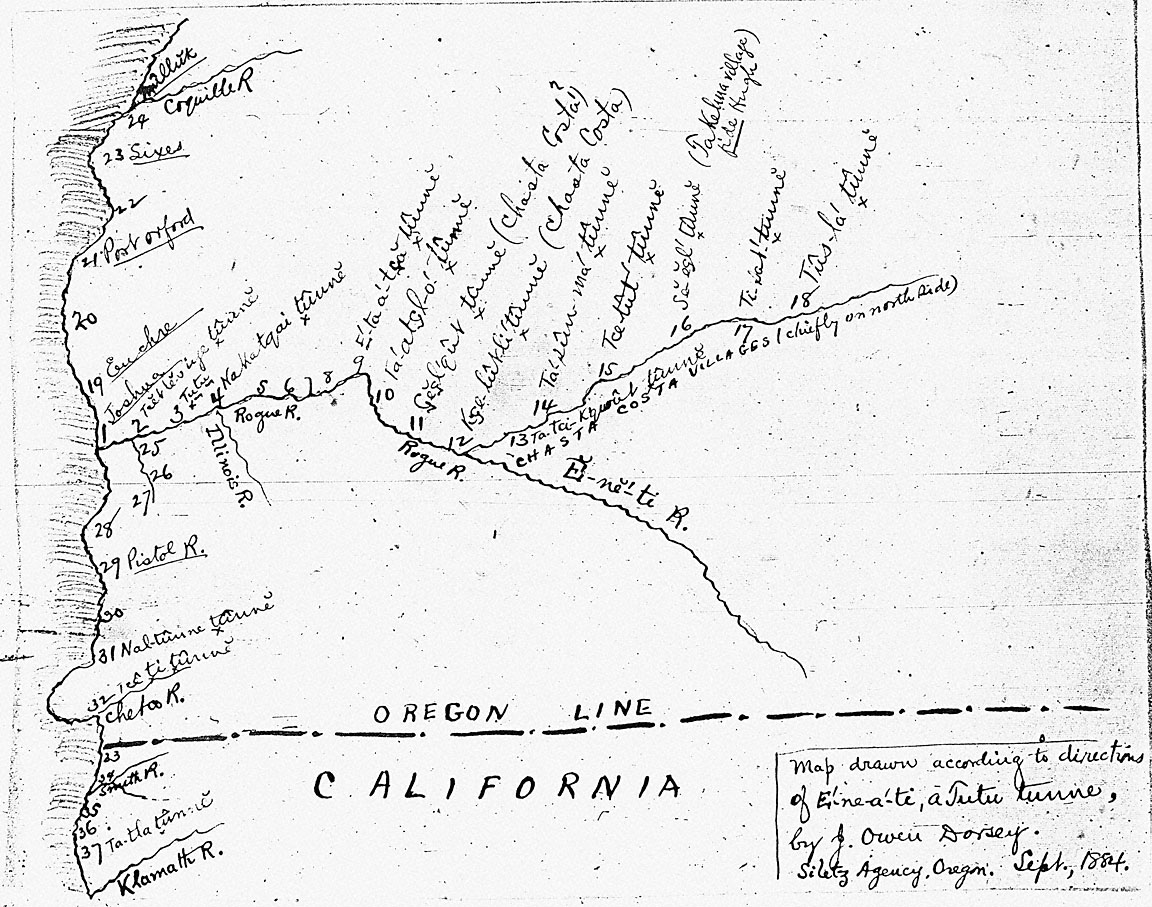This map was drawn in 1884 by the ethnologist James Owen Dorsey based on information given to him by É-ne-á-ti, a Tututni Indian living on western Oregon’s Siletz Reservation. It shows some of the major Indian village sites in southwestern Oregon prior to white resettlement of the region in the 1850s.
Most of the villages shown would have been inhabited by speakers of an Athapaskan language. These people ranged from the Coquille River south along the coast to the Winchuck River. They could also be found further inland in the Coquille, Umpqua, and Rogue river basins. The Athapaskans of southwestern Oregon were speakers of the Upper Umpqua, Tututni, and Galice-Applegate languages and the Chetco dialect of the Tolowa language, all of which belonged to the Pacific branch of the Athapaskan language family.
The Athapaskans were not a tribe, but rather a group of related peoples bound by similar languages and cultures. Athapaskan society was organized around the village, each of which had their own headman. Headmen were generally wealthier than commoners and often had several wives, as well as slaves. One of their primary roles was as intermediary in all village financial transactions. Although village leadership was inherited along the father’s line, social ranks were generally less rigid among the Athapaskans of southwestern Oregon than those of Northwest Coast Indian societies to the north.
Athapaskan villages like those shown here would have been inhabited primarily during the winter. Much of the summer was spent in the mountains, where men hunted for deer and elk while women gathered camas, salmonberries, and other plant foods. The fall brought many people to the rivers in time for the salmon runs. While men fished, women gathered hazelnuts, acorns, and tarweed.
The Athapaskans, along with other Native peoples of southwestern Oregon, were forcibly relocated to the Grand Ronde and Siletz reservations during the mid-1850s.
Further Reading:
Miller, Jay, and William R. Seaburg. “Athapaskans of Southwestern Oregon.” In Handbook of North American Indians, Vol. 7: Northwest Coast. Washington, D.C., 1990.
Written by Cain Allen, Oregon Historical Society, 2003.
